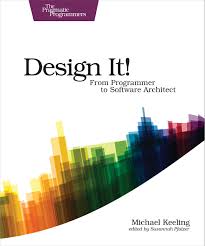From Programmer to Software Architect: A Guide to Career Progression
Introduction
The journey from programmer to software architect is a natural progression for many talented developers. This guide provides insights into the key skills, experiences, and qualities needed to make this transition successfully.
Essential Skills and Qualities
- Technical Proficiency: A strong foundation in programming languages, data structures, and algorithms is essential. Stay updated with the latest technologies and trends.
- Problem-Solving: The ability to analyze complex problems, break them down into smaller components, and develop effective solutions is crucial.
- Design Thinking: Understand design principles and methodologies to create scalable, maintainable, and user-friendly software systems.
- Communication: Effective communication skills are vital for collaborating with teams, stakeholders, and clients. Be able to articulate technical concepts clearly and concisely.
- Leadership: As a software architect, you'll often lead teams and make important decisions. Develop leadership skills, including the ability to motivate, inspire, and guide others.
- Business Acumen: Understand the business context of software development and how technology can drive value.
- Continuous Learning: The field of software development is constantly evolving. Stay curious and committed to lifelong learning.
Key Experiences and Certifications
- Project Management: Gain experience in managing software projects, including planning, scheduling, budgeting, and resource allocation.
- System Architecture: Understand system architecture concepts, such as distributed systems, microservices, and cloud computing.
- Domain Expertise: Develop deep knowledge in a specific domain or industry to become a subject matter expert.
- Certifications: Consider pursuing certifications like Certified Software Architect (CSA), Certified Software Development Professional (CSDP), or Certified Scrum Master (CSM) to validate your skills and knowledge.
Career Paths and Progression
- Senior Programmer: Gain expertise in a specific programming language or technology stack.
- Technical Lead: Lead small teams and take on more responsibility for project delivery.
- Systems Architect: Design and oversee the development of complex software systems.
- Enterprise Architect: Focus on the overall technology strategy and architecture of an organization.
Professional Development and Networking
- Mentorship: Seek mentorship from experienced software architects to gain valuable insights and guidance.
- Networking: Attend industry conferences, meetups, and online communities to connect with other professionals and stay updated on trends.
- Contribute to Open Source: Contribute to open-source projects to gain experience, learn from others, and showcase your skills.
- Continuous Learning: Stay updated with the latest technologies, frameworks, and best practices through online courses, tutorials, and books.
References
- The Software Architect's Handbook: A Practical Guide to Designing Complex Software Systems, by Len Bass, Paul Clements, and Rick Kazman
- Designing Data-Intensive Applications, by Martin Kleppmann
- Clean Architecture: A Craftsman's Guide to Software Structure, by Robert C. Martin
- The Pragmatic Programmer: From Journeyman to Master, by Andrew Hunt and David Thomas
- The Phoenix Project: A Novel About IT, DevOps, and Helping Businesses Find Hope, by Gene Kim, Kevin Behr, and George Spafford
By following these guidelines and continuously developing your skills, you can successfully transition from a programmer to a software architect and make a significant impact in the field. xintact ias-research.com for details.



